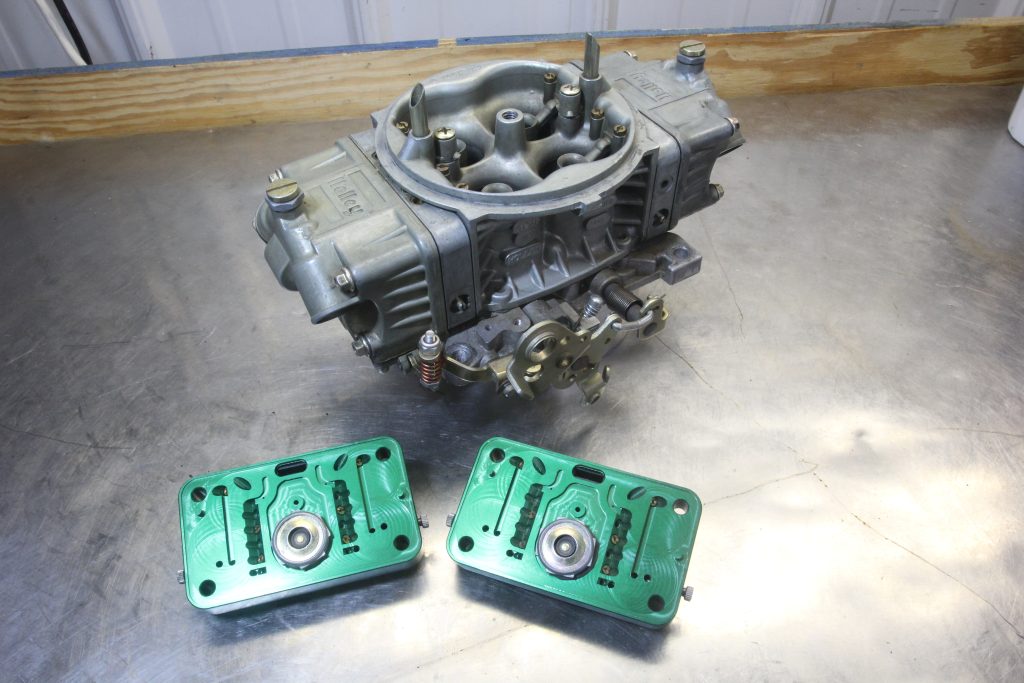I’ve read a story you wrote concerning mixing E85 with gasoline to create a blended fuel with a higher octane. This sounds like an interesting change that might be worth trying. I have a carbureted 383ci small block Chevy with 11:1 compression ratio with a not very aggressive mechanical roller cam that detonates on 91 octane pump gas at certain points during hard acceleration. This is especially bad on hot days. I’ve been mixing race gas but it’s expensive.
My question is if I were to mix 91 octane premium gas with E85 to come up with an E30 mix, from your online story, the octane will be roughly around 95 octane which is great. I know that I will have to jet the carburetor richer to compensate but I don’t know how much.
I was hoping you could toss me a ballpark number that would be close that I can then tune around.
Thanks,
D. A.
This is an interesting question. The story he refers to can be found here and it gets into the details of how blending ethanol at 20, 30, and up to 50 percent raises the octane rating when mixed with 91 octane E10 gasoline while reducing the cost of the fuel. Yes, you will burn more of the fuel because the ethanol is oxygenated, but the point is the cost per gallon is less while the octane improves from 91 to 94 with E30 and from 91 to 96 on E50.
What the original story did not detail is how you would increase the air-fuel ratio on a typical Holley carburetor in order to compensate for the additional fuel required for a proper air-fuel ratio when using, for example, E30.
Check out the chart below that shows the ethanol content from E0 (zero ethanol) up to E30 which represents a 30 percent mixture of ethanol with gasoline. Keep in mind that most pump gasoline is E10 with a 10 percent mix of ethanol and gasoline. This means that you are only adding an additional 20 percent ethanol in order to obtain an E30 mixture. This is achieved by mixing E85 with 91 octane E10 gasoline.
Ethanol Fuel Blending Ratio Guide
| Ethanol Content | Stoichiometric Ratio | Shift in Stoich. |
|---|---|---|
| E0 | 14.64 | 0% |
| E10 | 14.05 | 4% |
| E20 | 13.46 | 8% |
| E30 | 12.88 | 12% |
The reference to stoichiometric is the chemically correct air-fuel ratio for any particular fuel. For straight gasoline (E0) this ratio is 14.7:1. What few realize is that the A-F changes quite significantly even with only E10 fuel, changing from 14.7:1 to 14.1:1 (or 4 percent).
So when we blend to create an E30 fuel, we are really only adding 20 percent additional ethanol to the mixture because we’re starting with an E10 fuel. What’s exciting is that a rather small percentages of ethanol dramatically raises the octane rating.
It’s important to note that blender pumps are beginning to appear especially in the Midwest where E30 is automatically blended right into the nozzle. Unfortunately, they blend this additional 20 percent of ethanol with 87 octane fuel rather than 91. So if you intend to use a blended fuel as a benefit for octane, you will need to do your own mixing and start with 91 octane (or 93 if you can find it).
Based on the chart, a shift from E10 to E30 would lean the mixture roughly 8 percent. With a shift from E10 to E30, this would represent only an 8 percent change lean. The other half of this equation is that, according to Holley, a single number jet change is worth roughly 3 percent. So a move of roughly three to four jet sizes would, in theory, account for the change in a normal gasoline Holley carburetor from E10 to E30 fuel.
The effect on the idle circuit may be slightly more dramatic since the idle circuit isn’t as easy to change unless your carburetor has screw-in bleeds. The best route might be to change to a billet replacement metering block that can accommodate screw-in idle feed restrictor jets to make modifications easier. But these will be much smaller changes in terms of area. At a typical 0.030 inch idle feed restrictor diameter, a 0.001 inch larger diameter (richer) is equivalent to a 6.5 percent change in area while a 0.002 inch change in diameter is around 14 percent change.
The changes in main jetting will accommodate the wide open throttle mixture but will do nothing for the idle circuit. Assuming the carburetor is capable of a richer idle air-fuel, it should have enough headroom to compensate for this slightly more oxygenated fuel. Converting to E30 might also demand a slightly larger accelerator pump squirter as well. Finally, you might notice a slight difference in float level only because ethanol is a much denser fuel than gasoline which means the float level may change slightly higher in the bowl but the effect will likely be minor.

The many urban myths surrounding the negative effects of ethanol again should not be an issue but it would be a good idea to drain the float bowls when storing the engine for long periods like during winter. There are other chemicals in gasoline (such a toluene, ethyl benzene, and xylene) that are frankly far more damaging to carburetor components than ethanol, so draining the fuel from the float bowls and shooting WD-40 into the bowls when the car is stored for the winter is a solid plan to prevent damage from these chemicals.

Hi jeff.Enjoy reading your articles.lam looking to buy a new e85 carburetor for a roots style blower.l know if anybody would know you would.everything l read now is 8 or ten years old.quickfuel is out of business. Thanks for your time